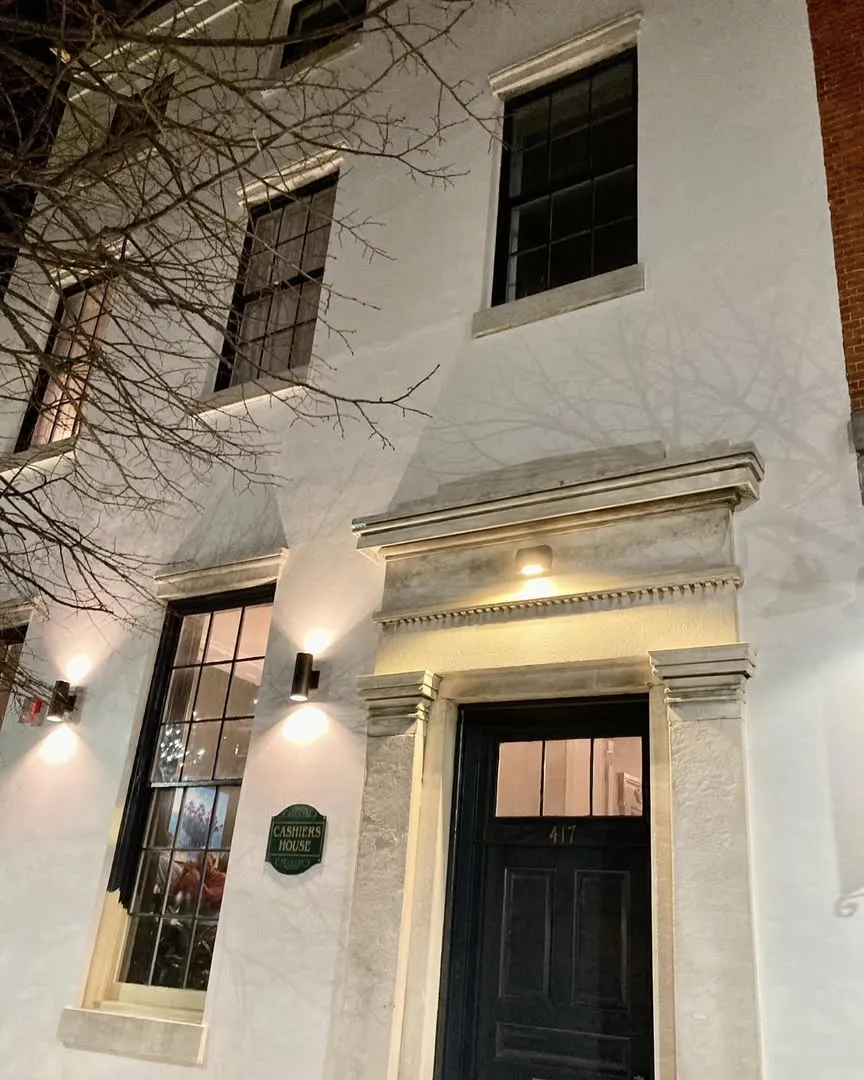The Cashier's House was designed and built in 1837-1839 by Philadelphia architect William Kelly. It was built as the home for the chief executive officer of the Bank of the United States, Erie Branch, which was located directly beside the house.
Masons William and James Hoskinson of Erie were responsible for constructing the Branch Bank, the Cashier's House, and the Coach House on East 4th Street. The exterior of the Cashier's House appears as a simple three-story brick townhouse, covered in tan-painted stucco. The doorway and cornice are Greek Revival style. This simple design masks the beauty of the interior.
Peter Benson, originally from Cincinnati, was selected in 1836 as the cashier for the new branch bank to be built in Erie. Benson, his wife Elizabeth, and their five sons were the first occupants of the house. Although the bank faltered in 1841, Peter Benson continued to reside in the Cashier's House until he died in 1843. Unfortunately, little else is known about the Benson family.
The simplistic stucco exterior masks the interior beauty of the building. Inside, marble flooring, vaulted ceilings, keyhole-shaped doorways, coffered ceilings, hand-grained detailing, and delicate molding accentuate the home's uniqueness and elegance.The entrance hall is 9 feet wide, with a ceiling height of 14.5 feet. The entire house is 30 feet wide and 125 feet deep. The keyhole-shaped doorways and window frames, featuring crown-head scrolls and Greek key designs, as well as coffer ceilings and egg-and-dart design molding, are noteworthy features.
Visitors are sure to notice the hand-grained door in the front hallway. Paint analysis has shown that all of the doors and woodwork in the building would have been hand-grained. The use of symmetry is also easily identified. Doors placed along the north wall have been paired with doors along the south wall; however, the doors along the south wall would have opened to brick walls only. These doors were installed purely for balance and decoration.
The building features furniture, artwork, costumes, and other items relevant to the home's occupants and the Victorian Era (1839-1901). While the furnishings are not original to the house, the beds, cupboards, paintings, chairs, and other pieces illustrate the types of furniture residents of the home would have used.